This post may contain affiliate links.
Cheese Kunafa is a beloved Middle Eastern dessert featuring crispy kataifi pastry filled with melted cheese, and soaked in a fragrant sugar syrup. This kunafa recipe makes it easy to recreate at home, giving you a golden, crunchy exterior with a rich, cheesy center.

Kunafa has always been a showstopper in Middle Eastern desserts—whether served at big celebrations or as a sweet treat after iftar during Ramadan. Its crispy golden layers and gooey cheese filling make it irresistible!
And just like other beloved Middle Eastern treats such as qatayef, luqaimat (sweet dumpling), and maamoul, this dessert has a special way of bringing people together. If you love the flavors of Kunafa, you’ll also enjoy the buttery layers of baklava and the soft and syrupy basbousa.
Table of Contents

What Is Kunafa?
Kunafa, also known as kunafeh, Knafeh, or knefeh, is a traditional Middle Eastern dessert made from thin, shredded pastry dough, usually known as kataifi or katayif, which is layered with a sweet cheese filling or creamy ashta.
The dessert is baked until the pastry is crispy and golden, and then soaked in a fragrant sugar syrup, often infused with rose or orange blossom water. Kunafa is usually garnished with a sprinkle of crushed pistachios or other nuts, adding a delightful crunch.
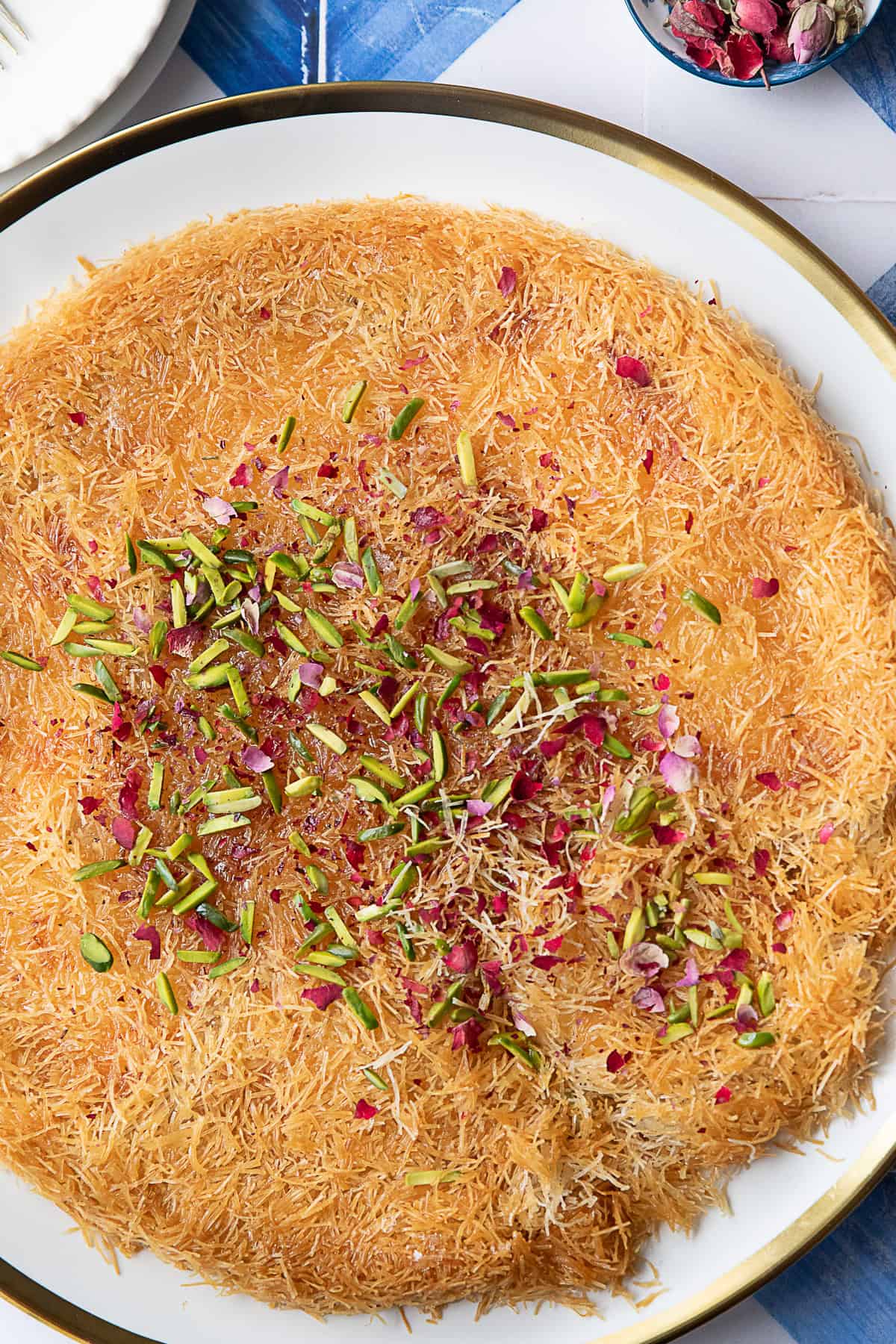
What Kind of Cheese Is Used in Kunafa Recipe?
In kunafa (or Knafeh), a specific type of cheese called nabulsi cheese is traditionally used. nabulsi cheese is a semi-hard cheese made from sheep’s milk and has a sweet and salty flavor.
In some variations of kunafa, akkawi cheese can be used as a substitute for nabulsi cheese. Akkawi cheese is a mild white cheese from the Middle East, often used in cooking due to its ability to melt and its slightly salty flavor.
You can also use fresh mozzarella cheese, like I did, which provides a more accessible alternative to traditional cheeses like nabulsi or akkawi.

Kunafa Recipe Ingredients
Syrup
Sugar: Sweetens the syrup, creating a sticky, sweet coating for the Kunefe. Regular granulated sugar works best in this recipe.
Water: Helps dissolve the sugar and create a syrupy consistency.
Lemon Juice: Adds a hint of acidity to balance the sweetness and prevent the syrup from crystallizing.
Kunafa
Katayif (Kataifi dough): Shredded pastry dough that forms the crispy layers of the Kunafa when baked.
Melted Butter: Coats and crisps up the katayif layers.
Mozzarella: Used as a cheese filling for its melting qualities. As mentioned above, you can use Nabulsi or Akkawi cheese.
Garnish
Pistachios: Chopped pistachios add crunch and a nutty flavor.
Roses: Used for decoration, adding a floral and aromatic touch to the dessert.
How to Make Kunafa Recipe
Step 1
In a small saucepan, combine sugar and water. Bring to a boil, then reduce to medium heat and simmer for 5-7 minutes until slightly thickened. Stir in lemon juice and optional flavorings. Let the sugar syrup cool completely

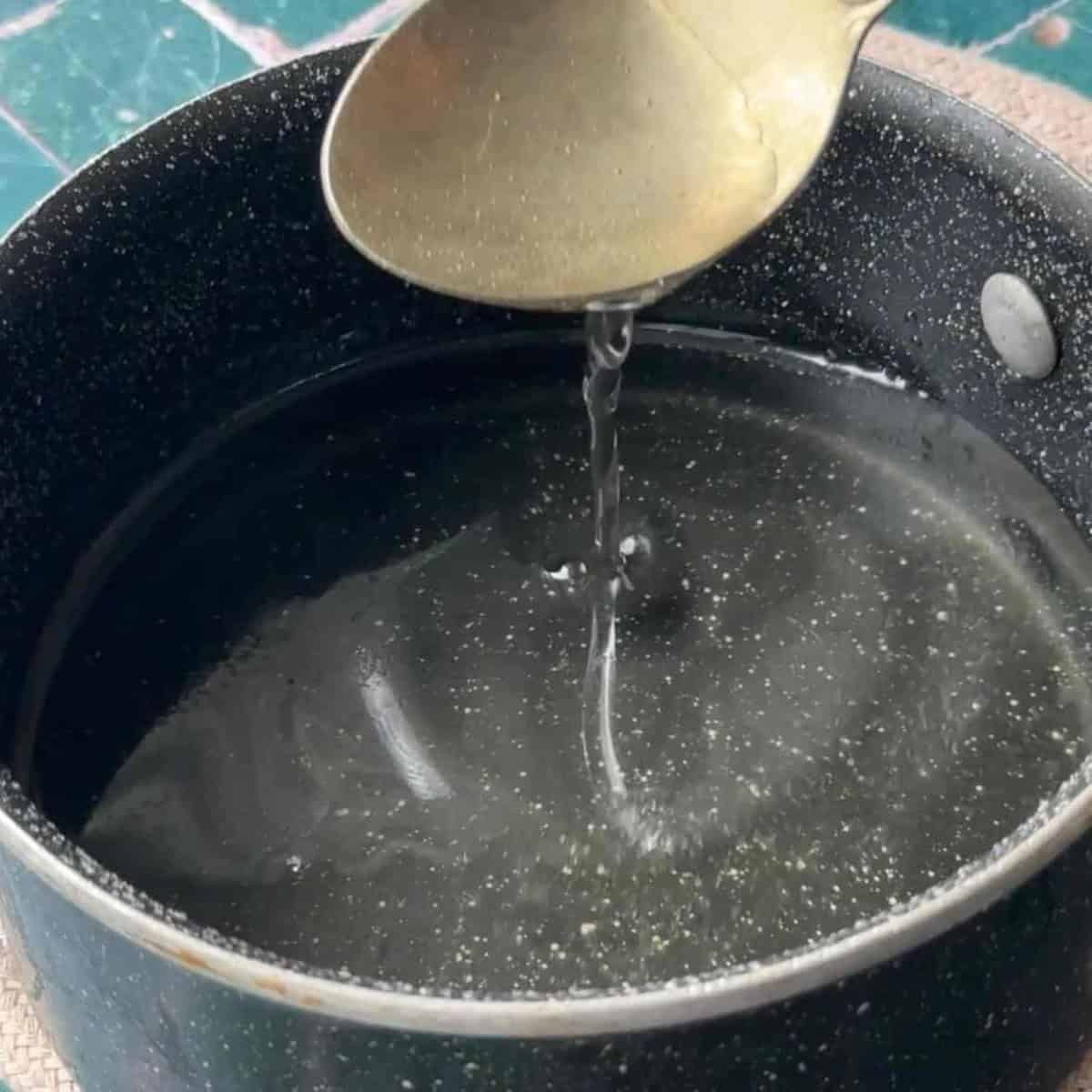
Step 2
Then, tear or slice the cheese and make sure to remove the moisture by pressing between paper towels.

Step 3
Preheat the oven to 350°F (175°C). Using a food processor or a knife, cut the kataifi into small strands. In a large bowl, mix with melted butter or melt ghee and coat the dough well to ensure a crispy texture.


Step 4
Then, brush the bottom of a 12-inch pan with melted butter. Spread half the kataifi in the pan, pressing firmly to create a solid base. Evenly distribute the mozzarella cheese, then layer the remaining kataifi on top, pressing gently to secure.


Spread the remaining buttered kataifi over the cheese layer, ensuring even coverage. Then, press gently to compact the Kunafa.
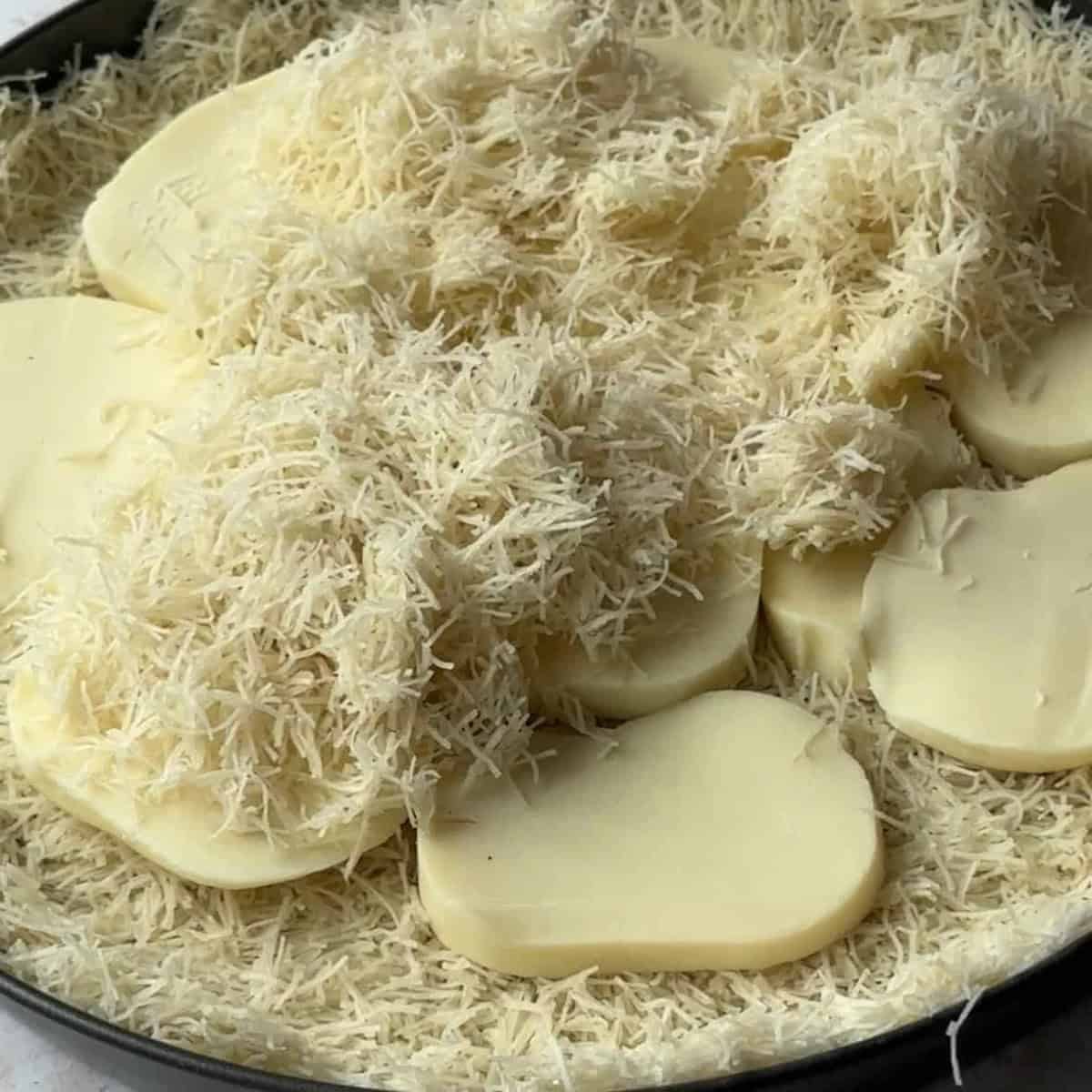
Step 5
Once baked, remove the kunafa from the oven. While still hot, drizzle the cooled syrup evenly over the entire surface of the kunafa. The hot kunafa will absorb the syrup, ensuring a sweet and moist dessert.
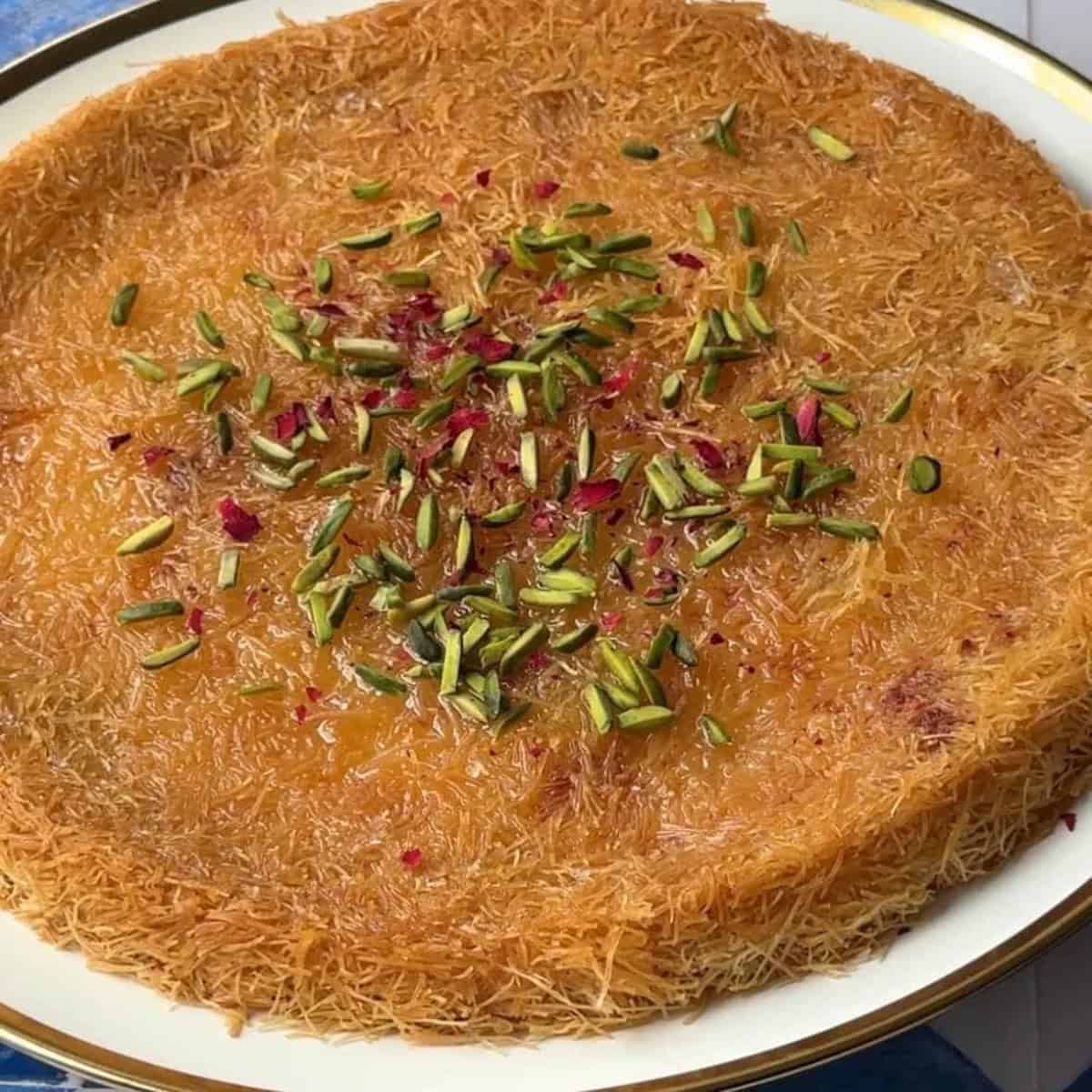
Finally, sprinkle chopped pistachios generously over the kunafa for added crunch and flavor. Optionally, decorate with edible rose petals or rose water for a fragrant and elegant finish.

Serving Suggestions
Enjoy kunafa fresh and warm, straight from the oven, when the pastry is crispy and the cheese filling is gooey.
Garnishes: Sprinkle additional chopped pistachios on top for extra crunch and a vibrant green color. You can also scatter a few edible rose petals over the kunafa for a fragrant and decorative touch.
Accompaniments: Serve Kunafa alongside a cup of traditional Arabic coffee or tea. The bitter notes of coffee or the aromatic tea complement the sweetness of the dessert beautifully.
Recipe Tips
I always make sure to fluff and separate the kataifi strands before using them. This keeps them from clumping and ensures even cooking.
I coat the kataifi dough thoroughly with melted butter or ghee to get that crispy texture we all love.
The best trick I follow is pouring cooled syrup over hot kunafa right after baking. This way, it absorbs perfectly without turning soggy.
Variations and Substitutions
Pre-made Kunafa Dough (Kunafa Na’ameh): Some specialty stores or online markets may offer ready-to-use Kunafa dough, ensuring an authentic experience without the need for homemade preparations.
Cheese Variations: Nabulsi Cheese is the traditional choice for Kunafa, but you can also use akkawi cheese or mozzarella cheese.
Butter: Substitute with clarified butter (ghee) for a nuttier flavor or with margarine for a dairy-free option.

Storage
Refrigeration: Place kunafa in an airtight container or wrap it tightly in plastic wrap. It will keep well in the refrigerator for up to 5 days.
Freezing: You can also freeze kunafa for longer storage. Wrap individual portions or the whole dish tightly in plastic wrap and then in foil. It can be frozen for up to 2-3 months.
Syrup: If kunafa has already been soaked in syrup, it’s best not to store it for extended periods as it may become too soggy. If you plan to store it, add syrup just before serving to maintain its texture.
Frequently Asked Questions
The syrup typically has a slightly thick but still pourable consistency. It’s similar to maple syrup, enough to coat the back of a spoon without being too runny.
You can typically find kataifi dough for kunafa at Middle Eastern grocery stores or specialty markets that carry Mediterranean or Turkish ingredients.
Yes! Assemble it, freeze, and bake straight from frozen, adding a few extra minutes.
Traditional kunafa made with kataifi or semolina dough is not gluten-free, as these types of dough contain wheat flour.
Yes, kunafa can be filled with ashta, which is a type of Middle Eastern clotted cream. Ashta adds a rich, creamy texture to Kunafa, making it a popular variation of this traditional dessert.
You can omit it or replace it with vanilla extract for a different flavor.

More Delicious Dessert Recipes
Did you make this recipe? I’d love to hear about it! Please comment and leave a 5-star🌟 rating below. You can also follow us on Instagram, Facebook, Pinterest or subscribe to our newsletter to get a free e-Cookbook!

Kunafa Recipe
Ingredients
Syrup
- 1½ cup Sugar
- ¾ cup Water
- 1 teaspoon Lemon Juice
Kunefe
- 1 pound Katayif
- ¾ cup Unsalted Butter, Melted
- 1½ pounds Mozzarella
Garnish
- Pistachios and roses
Instructions
- Place the sugar and water in a saucepan and place it over medium high heat. Bring it to a simmer, and cook for 10-15 minutes until it thickens a bit and sticks slightly to the back of a spoon. Add the lemon juice, turn the heat off and let the syrup come to room temperature. Keep in mind that the syrup will slightly thicken as it cools.
- Tear or slice the cheese and make sure to remove the moisture by pressing between paper towels.
- Cut the katayif into small pieces using a knife and place it in a bowl. Mix it with the melted butter using your hands to make sure every piece is coated with butter.
- Preheat the oven to 350 degrees F and brush the bottom of a 12 inch pan with melted butter.
- Spread half of the buttered katayif evenly at the bottom of the prepared pan, pressing down firmly with a glass to create a compact base and form walls along the sides of the pan.
- Distribute the torn mozzarella cheese evenly over the katayif layer, covering the entire surface.
- Spread the remaining buttered katayif over the cheese layer, ensuring even coverage and pressing gently to compact the kunafa.
- Bake the kunefe in the oven for 30 to 35 minutes until the top is crispy and golden. if the bottom is golden and the top is still pale in color, turn the broil on for 3-5 minutes, and make sure to keep a close eye.
- Once baked, remove the kunafa from the oven. While still hot, carefully pour the cooled syrup evenly over the entire surface of the kunafa. The hot kunafa will absorb the syrup, ensuring a sweet and moist dessert.
- Sprinkle chopped pistachios generously over the kunafa for added crunch and flavor. Optionally, decorate with edible rose petals or rose water for a fragrant and elegant finish.
Video
Notes
Nutrition
Nutrition information is automatically calculated, so should only be used as an approximation.
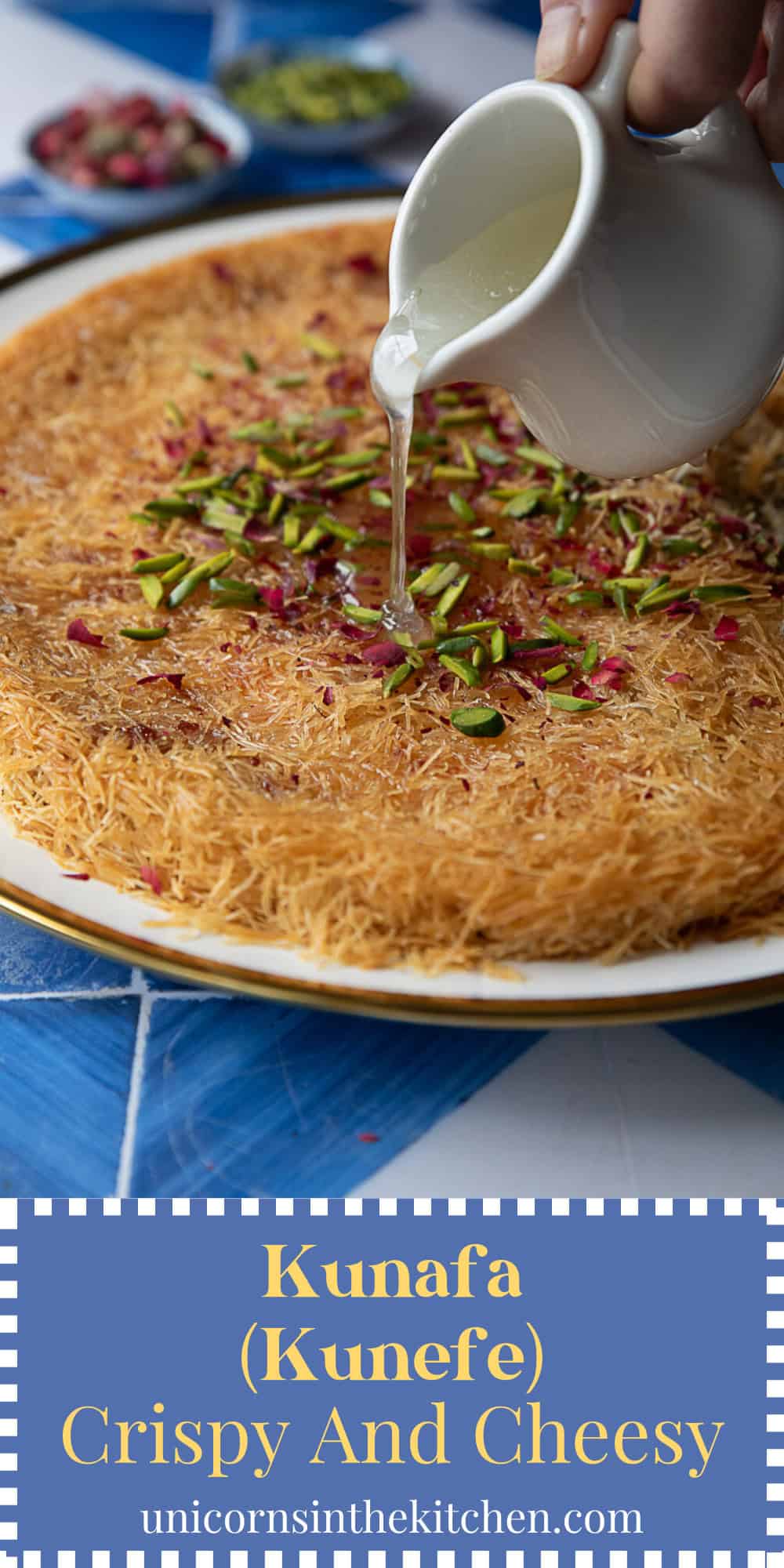
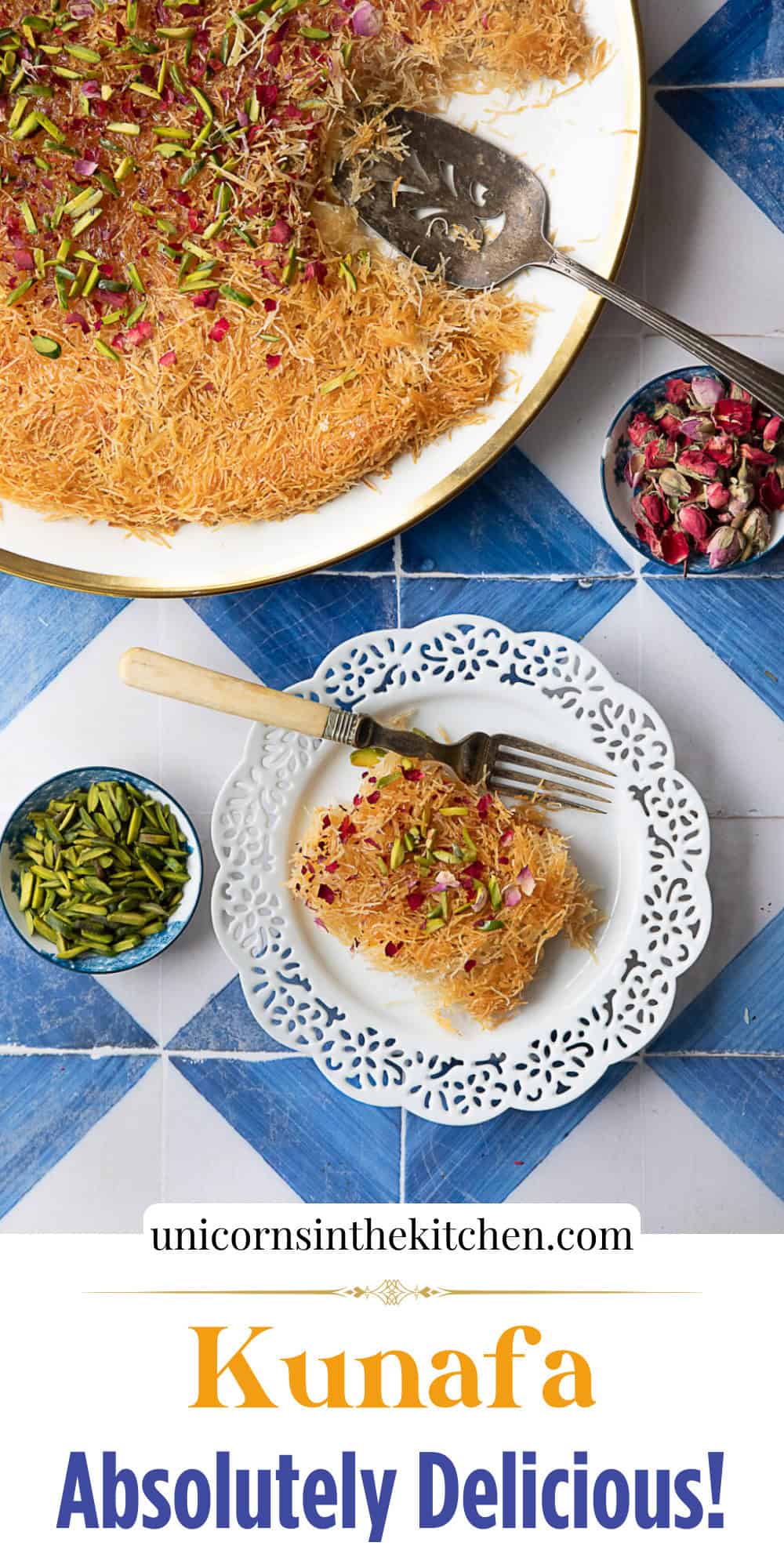


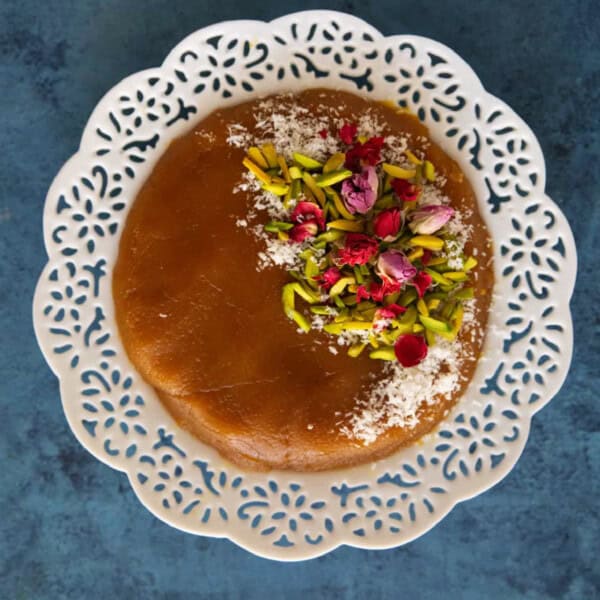
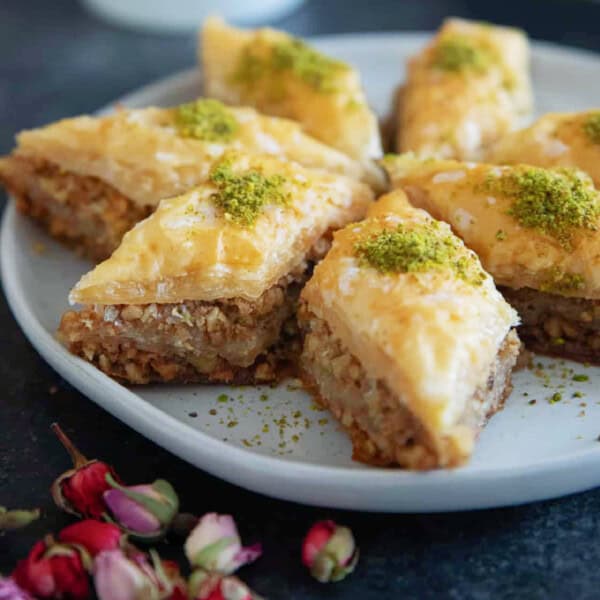









Shadi you are the best love this food.. Please don’t stop.. You are an inspiration to us all… 👍
Thank you so much! This is so kind of you, I hope you enjoy the recipes!
The instructions were easy to follow and it turned out perfectly- I loved it and so did my guests! Thank you
My daughter loves this dessert, I can’t wait to make it for her. Your step by step photos are fantastic!
The sweet syrup really does it for me, delicious!
This looks so delicious. Can’t wait to try this sweet treat!
The crispy pastry layers combined with the gooey, sweet cheese soaked in syrup created a delightful blend of textures and flavors that was simply irresistible. This scrumptious Middle Eastern dessert has quickly become a favorite in our household!